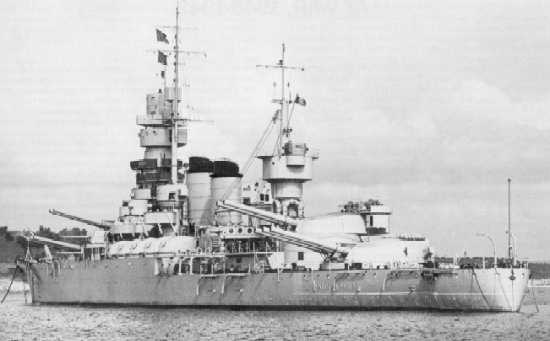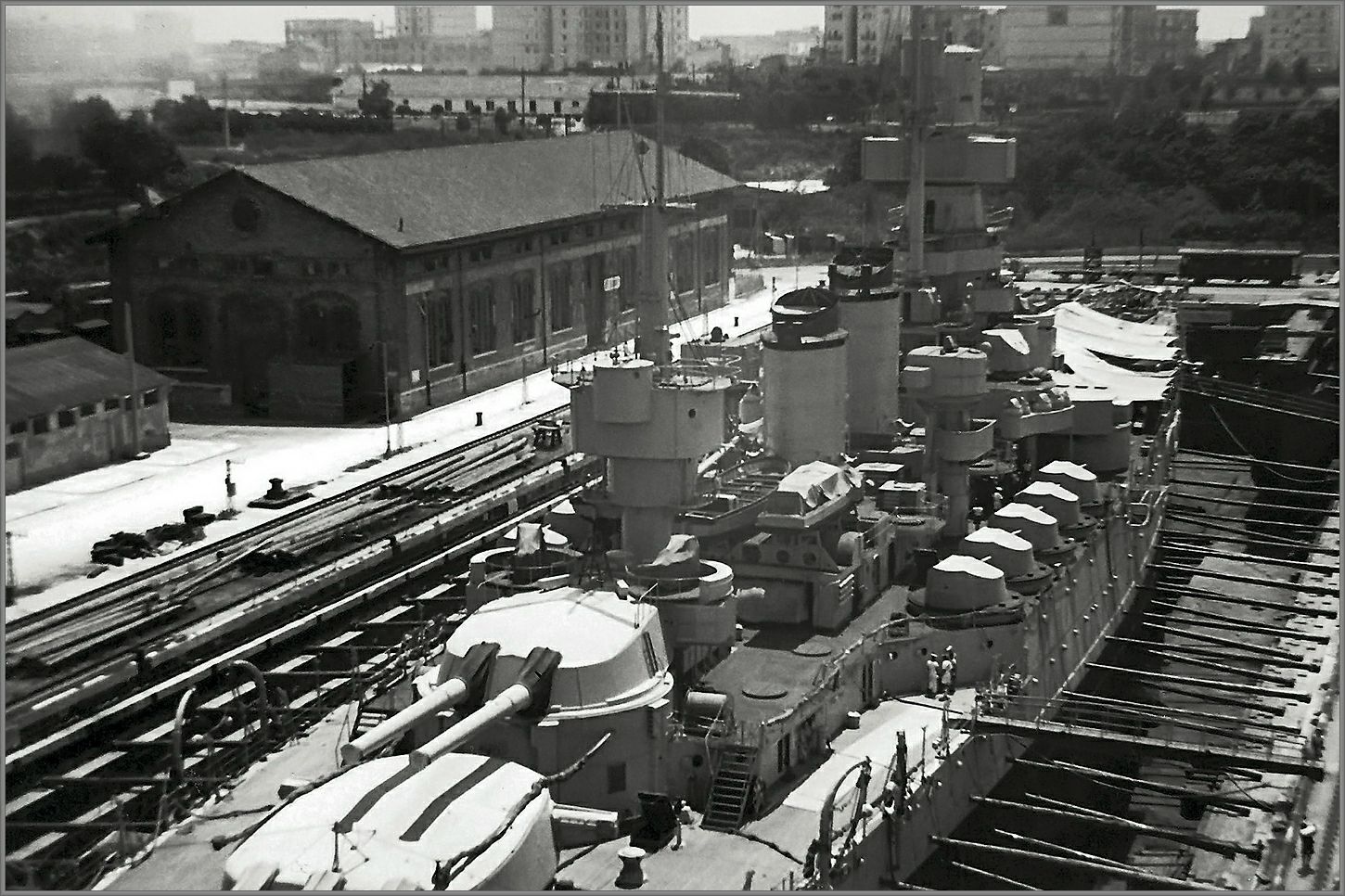These were originally 12"/46 (30.5 cm) Model 1909 guns used on battleships built before and during World War I. In the 1930s, these guns were rebuilt as part of the massive reconstruction of the old battleships. The conversion was judged to be satisfactory with 13.4% more muzzle energy being obtained. However, the rebuilt guns had more longitudinal droop and slightly more shell dispersion.
The Cesare class guns were of Elswick Pattern "T" and those of the Duilio class were of Vickers Mark "G" type. Welin breech-blocks were used for both types. The Elswick guns were converted by Ansaldo and the Vickers guns by OTO. See the 12"/46 (30.5 cm) Model 1909 data page for the original construction details. The conversion consisted of boring out to remove the original A tube and apparently some of the wire. The remainder was shrunk on to a new A tube. It is possible that a shrunk or tupped inner A tube was also fitted.
Actual bore length of these reworked guns was 43.75 calibers.
| Designation | 320 mm/44 (12.6") Model 1934 and Model 1936 |
|---|---|
| Ship Class Used On | OTO Model 1934: Cavour Class
Ansaldo Model 1936: Doria Class |
| Date Of Design | 1934 and 1936 (as remanufactured) |
| Date In Service | 1940 (as remanufactured) |
| Gun Weight | 64 tons (69,672 kg) |
| Gun Length oa | about 571 in (14.500 m) |
| Bore Length | 551.2 in (14.000 m) |
| Rifling Length | about 446 in (11.320 m) |
| Grooves | about 80 |
| Lands | N/A |
| Twist | Uniform RH 1 in 30 |
| Chamber Volume | about 21,360 in3 (450 dm3) |
| Rate Of Fire | 2 rounds per minute |
| Type | Bag |
|---|---|
| Projectile Types and Weights | AP: 1,157 lbs. (525 kg)
HE: 1,010 lbs. (458 kg) |
| Bursting Charge | N/A |
| Projectile Length | N/A (probably 4.46 calibers) |
| Propellant Charge | 386 lbs. (175 kg) 1 |
| Muzzle Velocity | 2,723 fps (830 mps) |
| Working Pressure | 19.5 tons/in2 (3,100 kg/cm2) |
| Approximate Barrel Life | 150 rounds |
| Ammunition stowage per gun | 100 rounds |
- ^Propellant charges were in quarters.
- The Naval Museum in Venice, Italy, has a 320 mm APC projectile on display (Inventory #4402).
| Elevation | Distance |
|---|---|
| 27 degrees
(max elevation of Cavour) |
31,280 yards (28,600 m) |
| 30 degrees
(max elevation of Doria) |
32,150 yards (29,400 m) 1a |
- ^This range is taken from "Italian Warships of World War II." "Naval Weapons of World War Two" believes that this range is an error and the actual range would be closer to 33,100 yards (30,270 m).
| Designation | Two-gun Turrets
Cavour (2): Model 1934 Duilio (2): Model 1936 Three-gun Turrets
|
|---|---|
| Weight | Two-gun Turrets: 539 tons (548 mt)
Three-gun Turrets: 733 tons (745 mt) |
| Elevation | As originally built: -5 / +20 degrees
As modernized: Cavour: -5 / +27 degrees Doria: -5 / +30 degrees |
| Elevation Rate | 6 degrees per second |
| Train | about +120 / -120 degrees |
| Train Rate | 5 degrees per second |
| Gun recoil | 41 in (1.05 m) |
| Loading Angle | +12 degrees |
- These turrets were originally hydraulically powered, but when modified were converted to electrical power.
- The gun axes were 90 in (228.6 cm) apart in both the two-gun and the three-gun mountings.
"Regia Marina: Italian Battleships of World War Two" by Erminio Bagnasco and Mark Grossman
"Naval Weapons of World War Two" by John Campbell
"Italian Warships of World War II" by Aldo Fraccaroli
"The Cavour and Duilio Class Battleships" article by Giorgio Giorgerini in "Warship Volume IV"
"Battleships of World War I" by Peter Hore
---
Special help by Nathan Okun
03 November 2008 - Benchmark
6 May 2012 - Updated to latest template
29 July 2019 - Updated to HTML 5 format, reorganized notes, corrected typographical error
03 April 2020 - Added note to range table
01 April 2021 - Added photograph of Andrea Doria post-war
24 October 2022 - Corrected HTML problem



